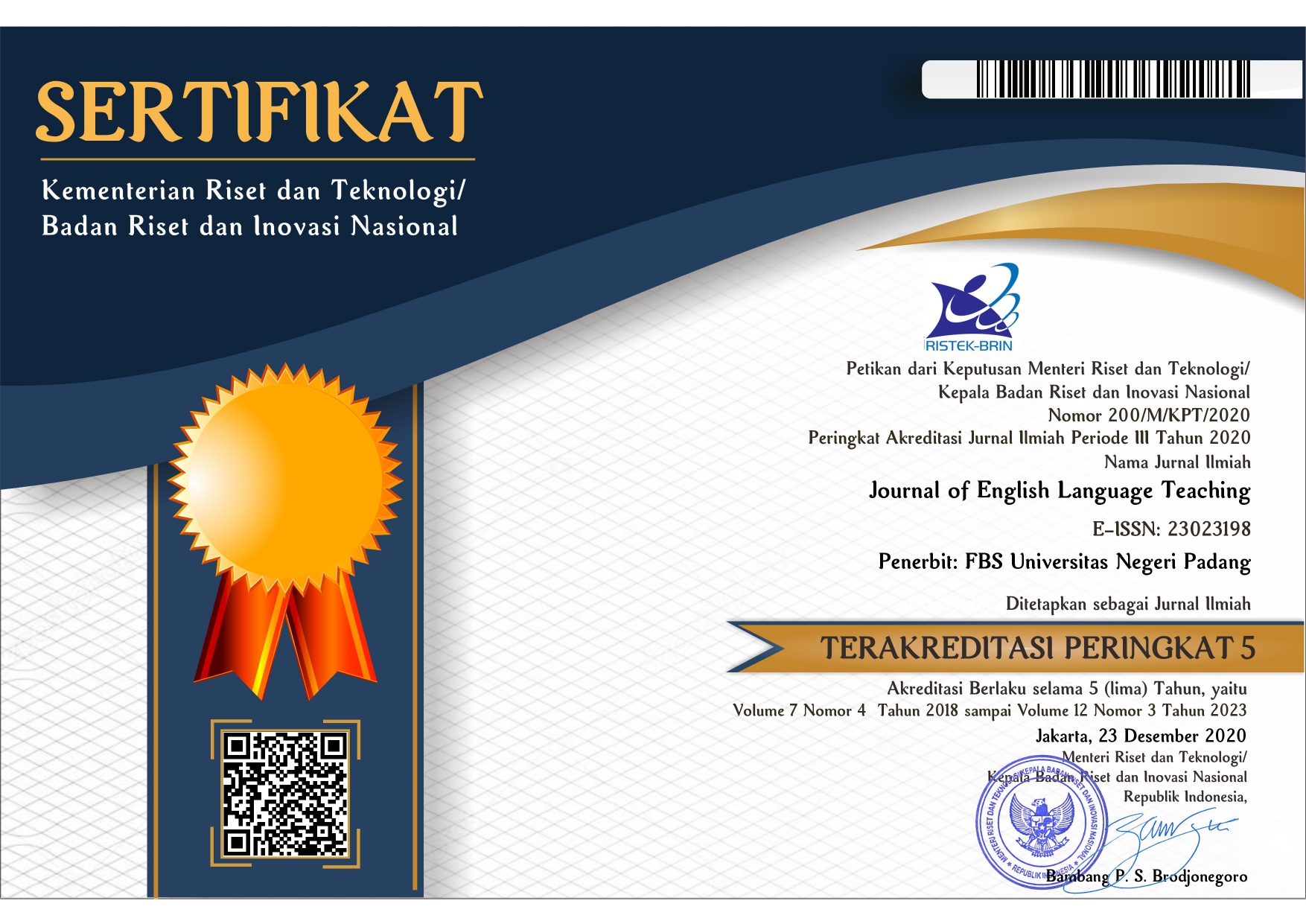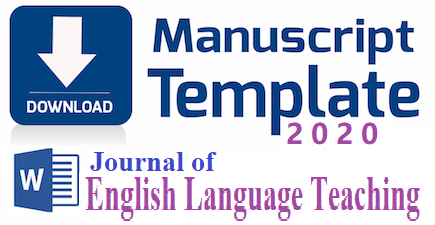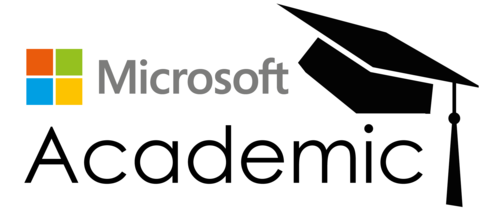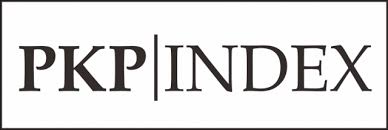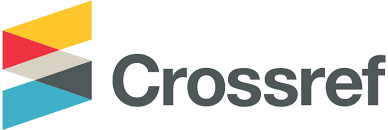Submissions
Registration and login are required to submit items online and to check the status of current submissions.
Already have a Username/Password for Journal of English Language Teaching?
Need a Username/Password?
Submission Preparation Checklist
As part of the submission process, authors are required to check off their submission's compliance with all of the following items, and submissions may be returned to authors that do not adhere to these guidelines.
- The submission has not been previously published, nor is it in a submission process in another journal (an explanation must be provided in Comments to the Editor).
- The submission file is in Microsoft Word. DO NOT SUBMIT PDF document. Please download the template as the format. The approval is submiited as suplementary file.
- Where available, URLs for the references are provided.
- The text is single-spaced; uses a 12-point Times New Roman font; employs italics, rather than underlining (except with URL addresses); and all illustrations, figures, and tables are placed within the text at the appropriate points, rather than at the end.
- The text adheres to the stylistic and bibliographic requirements outlined in the Author Guidelines, which is found in About the Journal.
- The manuscript has reffered to the previous article published in this journal.
Copyright Notice

Journal of English Language Teaching is licensed under a Creative Commons Attribution-NonCommercial 4.0 International License.
An author who publishes in Journal of English Language Teaching agrees to the following terms:
- Share — copy and redistribute the material in any medium or format
- Adapt — remix, transform, and build upon the material
- The licensor cannot revoke these freedoms as long as you follow the license terms.
Under the following terms:
Attribution — You must give appropriate credit, provide a link to the license, and indicate if changes were made. You may do so in any reasonable manner, but not in any way that suggests the licensor endorses you or your use.
NonCommercial — You may not use the material for commercial purposes.
- No additional restrictions — You may not apply legal terms or technological measures that legally restrict others from doing anything the license permits.
Notices:
- You do not have to comply with the license for elements of the material in the public domain or where your use is permitted by an applicable exception or limitation.
- No warranties are given. The license may not give you all of the permissions necessary for your intended use. For example, other rights such as publicity, privacy, or moral rights may limit how you use the material.
Read more about the Creative Commons Attribution-NonCommercial 4.0 Licence here: https://creativecommons.org/licenses/by-nc/4.0/.
Privacy Statement
The names and email addresses entered in this journal site will be used exclusively for the stated purposes of this journal and will not be made available for any other purpose or to any other party.

